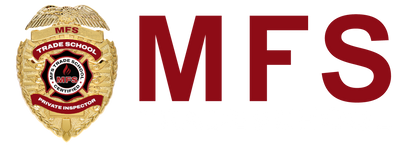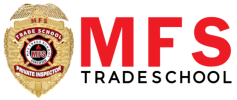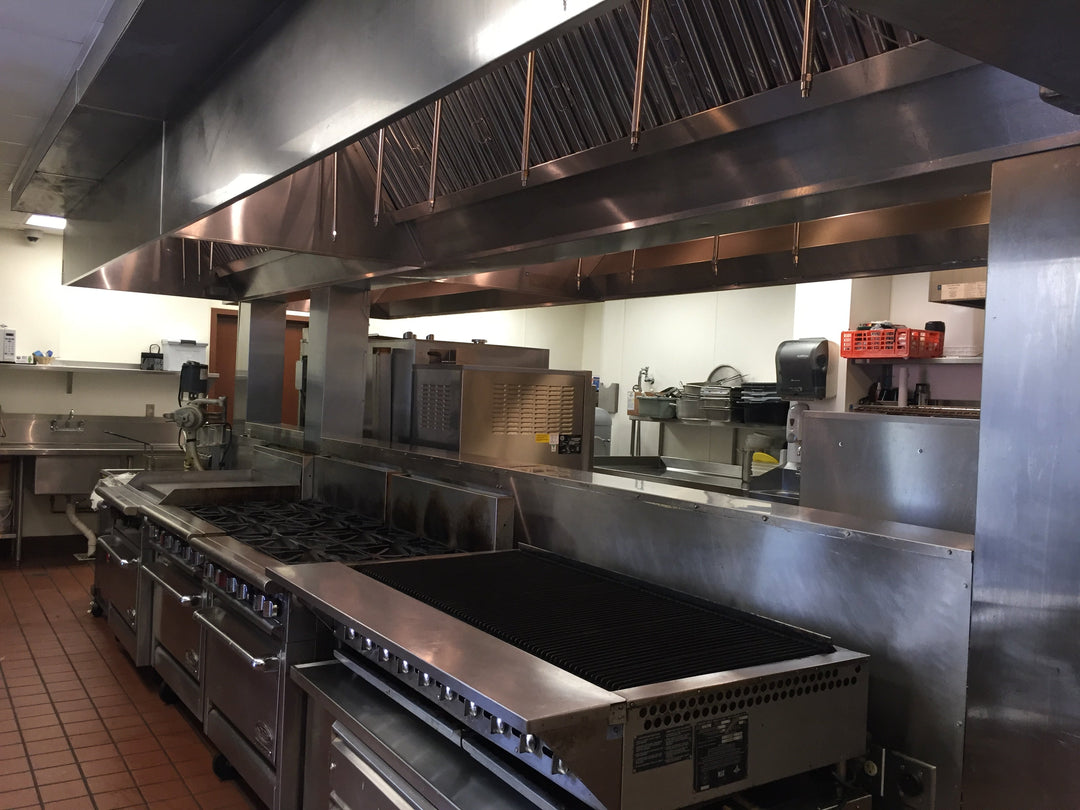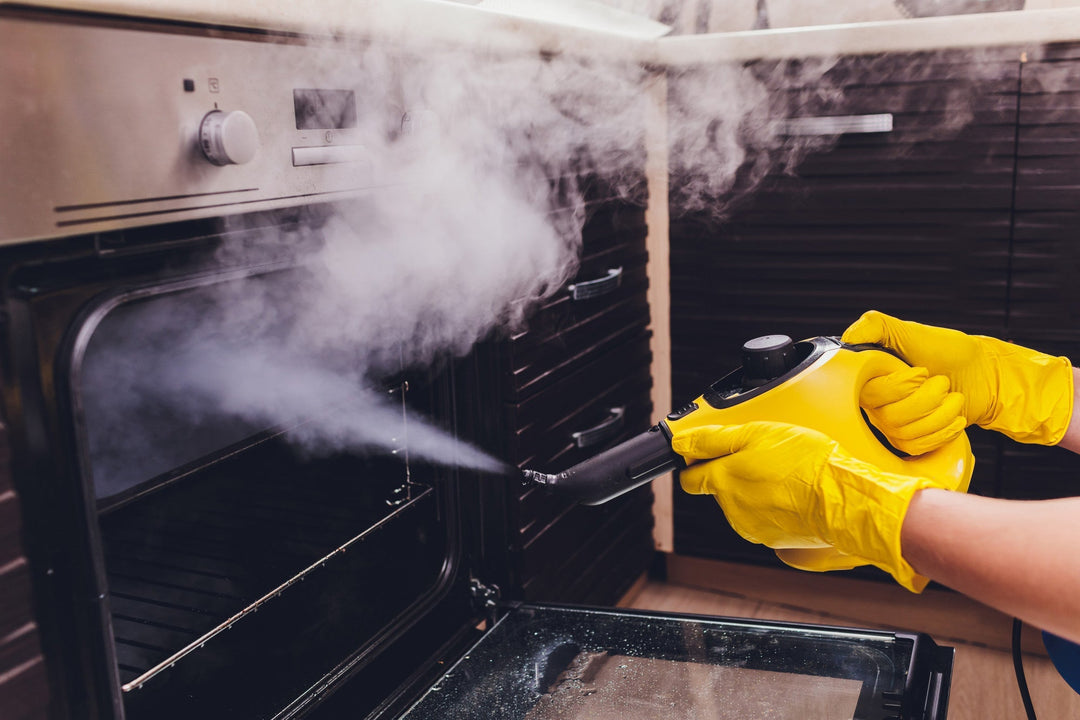Decoding NFPA 96: The Ultimate Guide for Kitchen Technicians

Every commercial kitchen's safety hinges on proper ventilation and fire prevention systems. At the heart of these critical safety measures lies NFPA 96 - the gold standard that governs commercial kitchen ventilation and fire protection systems across North America.
NFPA 96 isn't just another regulatory requirement. It's your blueprint for creating and maintaining a safe kitchen environment. This comprehensive standard covers everything from hood installations to fire suppression systems, making it essential knowledge for:
- Kitchen technicians responsible for system installations
- Business owners managing commercial kitchens
- Maintenance professionals handling regular upkeep
- Safety inspectors ensuring compliance
You can't afford to misinterpret or overlook NFPA 96 requirements. A single oversight in your kitchen ventilation system can lead to:
- Dangerous grease fires
- Failed safety inspections
- Business shutdowns
- Insurance claim denials
- Costly equipment repairs
This guide breaks down NFPA 96's complex requirements into clear, actionable insights. You'll learn practical applications of the standard, from proper installation techniques to maintenance schedules. Whether you're a seasoned kitchen technician or a business owner, understanding these guidelines helps you maintain a safer, more efficient kitchen operation while ensuring regulatory compliance.
However, maintaining a safe kitchen extends beyond understanding NFPA 96. It also involves implementing effective cleaning and disinfecting practices to eliminate potential hazards. For instance, utilizing MFS's virus disinfecting services can significantly enhance the safety of your kitchen by protecting your space from harmful pathogens with thorough and efficient solutions.
Moreover, proper cleaning of kitchen equipment such as exhaust hoods is crucial. You can debunk common misconceptions about this process by reading about the top 5 myths about kitchen hood cleaning.
In addition, using specialized cleaning tools like an MFS Electrostatic Misting Fogger can streamline your cleaning process. This battery-operated fogger can reach up to 8 feet away and mist a room of 14' x 20' in seconds, making it a versatile tool for any kitchen.
Finally, regular maintenance of your kitchen equipment is essential to ensure they function optimally. This includes tasks such as pressure washing with a 100ft pressure washing hose and using specialized cleaners like the all-purpose freezer cleaner, which is effective even at -20°F and ideal for walk-in freezers.
Let's decode NFPA 96 together and build safer commercial kitchens while also ensuring we follow best practices for cleaning and maintenance.

Understanding NFPA 96: An Overview
NFPA 96 is the primary standard for ventilation control and fire protection in commercial kitchens. It sets important safety rules for designing, installing, and maintaining kitchen exhaust systems.
What Does NFPA 96 Cover?
The standard covers several key areas:
- Cooking Equipment: Guidelines for proper placement and clearance requirements.
- Kitchen Exhaust Hoods: Specifications for construction materials and installation methods.
- Duct Systems: Requirements for design, materials, and accessibility.
- Grease Removal Devices: Standards for filters and other grease-capturing components.
- Exhaust Fans: Performance criteria and maintenance specifications.
- Fire Suppression Systems: Requirements for installation and regular testing.
NFPA 96 aims to prevent fires by addressing potential dangers directly. It mandates specific construction techniques, such as:
- Liquid-tight welds for hood assemblies
- Minimum steel gauge requirements for ductwork
- Precise clearance specifications from combustible materials
- Detailed requirements for access panels and cleaning ports
These rules serve multiple purposes:
- Fire Risk Reduction: Proper installation and maintenance minimize grease buildup.
- Regulatory Compliance: Meeting local health and safety codes.
- Insurance Requirements: Satisfying coverage conditions.
- Equipment Longevity: Protecting kitchen infrastructure investments.
Inspections and Cleaning
The standard requires regular inspections by certified professionals. The frequency of cleaning depends on how much cooking is done and the type of cooking involved. For example:
- High-volume operations using solid fuels need monthly inspections.
- Facilities with lighter usage may require quarterly or semi-annual cleaning.
Documentation and Record-Keeping
NFPA 96 also emphasizes the importance of keeping records. Kitchen operators must maintain detailed logs of:
- Inspection dates and findings
- Cleaning services performed
- Maintenance activities
- Fire system testing results
These records are vital for meeting regulations and can be helpful during insurance claims or liability disputes.
The Role of Cooking Oil Filtration
An important aspect of maintaining a commercial kitchen is the effective filtration of cooking oil, which plays a crucial role in creating delicious fried foods. However, the quality and lifespan of cooking oil can significantly impact a restaurant's profitability and the overall dining experience. Proper cooking oil filtration can help mitigate these issues.
Packages to Aid Exhaust Hood Cleaning
To assist with these stringent cleaning requirements, businesses can invest in packages such as the Gold Package Kitchen Exhaust Hood Cleaning or the Silver Package Exhaust Hood Cleaning. These packages include all necessary equipment to start an efficient exhaust hood cleaning business.
Seasonal Maintenance Tips
Furthermore, it's crucial to follow seasonal maintenance tips for kitchen exhaust systems to ensure they run efficiently and safely year-round.

Key Components Regulated by NFPA 96
NFPA 96 establishes strict regulations for critical components in commercial kitchen ventilation systems. Let's examine the essential elements and their specific requirements:
Range Hoods and Exhaust Systems
Commercial kitchen exhaust hoods serve as the first line of defense against grease, smoke, and heat. These systems must meet specific criteria:
- Hood Construction MaterialsStainless steel (minimum 18-gauge) or equivalent noncombustible materials
- Continuous liquid-tight welds at all seams and joints
- Smooth interior surfaces for easy cleaning
- No penetrations except for electrical connections
- Exhaust Duct RequirementsMinimum 16-gauge carbon steel or 18-gauge stainless steel construction
- Welded joints with smooth interior surfaces
- Direct vertical or horizontal runs with minimal bends
- 18-inch clearance from combustible materials
Grease Removal Devices
The filtration system plays a crucial role in grease capture and fire prevention:
- Filter SpecificationsUL 1046 listed grease filters
- Removable for cleaning and maintenance
- Tight-fitting installation with no gaps
- Minimum 45-degree mounting angle from horizontal
- Mounting and Support SystemsNoncombustible mounting hardware
- Secure attachment to prevent displacement
- Easy access for inspection and cleaning
- Drip trays with proper drainage systems
Ventilation Control Systems
The control mechanisms ensure proper system operation:
- Air Movement ComponentsVariable frequency drives for fan control
- Dedicated make-up air systems
- Interlocked exhaust and supply fans
- Emergency shutdown capabilities
These components work together to create an effective ventilation system that meets safety standards while maintaining optimal kitchen operations. Each element requires regular inspection and maintenance to ensure continued compliance with NFPA 96 regulations.
Installation Requirements for Kitchen Exhaust Systems Under NFPA 96 Standards
Proper installation of kitchen exhaust systems demands meticulous attention to detail and strict adherence to NFPA 96 standards. Here's what you need to know about the critical installation requirements:
Clearance Requirements
- 18-inch minimum clearance between exhaust ducts and combustible materials
- Zero clearance allowed for non-combustible materials with proper insulation
- 6-inch minimum space between multiple hood installations
Duct Installation Specifications
- Vertical or horizontal runs must maintain a minimum slope of 2 degrees
- All seams must be welded with liquid-tight construction
- Access doors required every 12 feet for horizontal ducts
- Vertical risers need access points at each floor level
Hood Mounting Guidelines
- Maximum mounting height: 4 feet above cooking surface
- Minimum mounting height: 6.5 feet from floor level
- Front overhang must extend 6 inches beyond cooking equipment
- Side panels required when hood-to-wall distance exceeds 3 inches
Filter Placement Requirements
- 45-degree angle installation for optimal grease capture
- Minimum 2-foot spacing between filter banks
- Bottom edge of filters must maintain 2-foot clearance from cooking surface
- Filters must be easily removable for cleaning
Airflow Considerations
- Supply air must not exceed 80% of exhaust volume
- Makeup air introduction point: minimum 6 feet from exhaust discharge
- Air velocity at hood face: 50-100 feet per minute
- Exhaust fan placement must ensure positive upward airflow
Support Structure Requirements
- Independent support system required for hoods over 75 pounds
- Support rods must be fire-rated and secured to building structure
- Vibration isolation required for all fan mounting points
- Seismic restraints needed in applicable zones
These installation specifications ensure optimal system performance while maintaining safety standards. Each requirement plays a crucial role in preventing fire hazards and maintaining efficient grease capture capabilities, which is essential for restaurant cleanliness as evaluated by health inspectors.
Maintenance & Cleaning Protocols According to NFPA 96 Guidelines
Regular kitchen exhaust hood cleaning is essential to prevent grease fires in commercial kitchens. The NFPA 96 guidelines specify cleaning schedules based on cooking volume and type to ensure safety.
Required Cleaning Frequencies:
- Monthly Cleaning: High-volume cooking operations (24-hour restaurants, charbroiling facilities)
- Quarterly Cleaning: Moderate-volume cooking operations (standard restaurants, hotel kitchens)
- Semi-Annual Cleaning: Low-volume cooking operations (seasonal businesses, churches)
- Annual Cleaning: Minimal cooking operations (day camps, senior centers)
Professional Hood Cleaning Services Must Include:
- Complete disassembly of removable components
- Thorough cleaning of hood surfaces using approved degreasers
- Pressure washing of ductwork from access points
- Cleaning of exhaust fans, including housing and blades
- Inspection of system components for damage or wear
- Documentation with before/after photos
- Placement of cleaning certification stickers
Signs Your System Needs Immediate Cleaning:
- Visible grease droplets on hood surfaces
- Strong cooking odors lingering in kitchen
- Decreased ventilation efficiency
- Grease accumulation visible through access panels
- Sticky residue on filters or surrounding walls
Kitchen exhaust hood cleaning requires certified professionals with specialized equipment and cleaning agents. These experts understand the complexities of different system configurations and ensure thorough cleaning of all components, from filters to remote exhaust fans.
The cleaning process must address both accessible and hidden areas where grease accumulates. Professional hood cleaning services use specialized tools to reach deep into ductwork, ensuring complete removal of combustible deposits that standard cleaning methods might miss.
Documentation plays a vital role in maintaining compliance. Each cleaning service must provide detailed reports, including dates, areas cleaned, and any system deficiencies discovered during the process. These records protect businesses during inspections and insurance audits.
Moreover, regular kitchen exhaust cleaning not only improves health ratings but also keeps the kitchen compliant with health department standards. It's essential for commercial kitchens to adopt advanced virus disinfection techniques as well, given the rise of foodborne illnesses and viral outbreaks. Implementing effective cleaning protocols not only protects customers but also ensures public health and safety.
Finally, [regular equipment maintenance](https://mfstradeschool.com/blogs/janitorial-restaurant-cleaning/top-5-reasons-equipment-maintenance-matters-for-cleaning-businesses) is crucial for cleaning businesses. It boosts efficiency, reduces downtime, and saves on costly repairs with proper care.

Fire Suppression Systems Under NFPA 96 Standards: What You Need to Know
A kitchen fire suppression system is your first line of defense against potentially devastating grease fires. NFPA 96 has specific requirements to ensure these systems provide reliable protection in commercial kitchens.
UL 300 Compliance Requirements
Your fire suppression system must meet UL 300 standards, which specifically address:
- Pre-engineered wet chemical systems designed for high-temperature fires
- Specific nozzle placement requirements above cooking equipment
- Proper agent distribution to effectively combat grease fires
- Regular maintenance and testing protocols
Key Components of Modern Kitchen Fire Suppression Systems
1. Detection Mechanisms
- Heat detectors
- Fusible links
- Manual pull stations
2. Suppression Agent Distribution
- Wet chemical agents (potassium-based)
- Strategically placed nozzles
- Protected supply lines
Automatic Fuel Shut-off Integration
Your suppression system must include automatic fuel shut-off capabilities:
- Immediate gas line closure upon system activation
- Electric equipment power termination
- Integration with building alarm systems
- Reset protocols after discharge
System Activation Methods
The NFPA 96 standard requires dual activation methods:
- Automatic activation through heat detection
- Manual pull stations located along exit paths
- Both methods must trigger complete system response
Maintenance Requirements
Your system needs regular attention to maintain compliance:
- Bi-annual inspections by certified technicians
- Testing of all mechanical components
- Verification of agent levels and pressure
- Documentation of all maintenance activities
A properly installed and maintained kitchen fire suppression system creates a comprehensive safety net for your commercial kitchen operations. The system's integration with fuel sources and multiple activation methods provides layered protection against fire hazards.
Benefits of Adhering to NFPA 96 Standards for Kitchen Technicians & Business Owners
Strict adherence to NFPA 96 standards creates substantial advantages for both kitchen technicians and business owners. Let's explore these key benefits:
Fire Risk Reduction & Safety Enhancement
- Minimizes grease accumulation through standardized cleaning protocols, such as regular hood cleaning
- Creates multiple layers of fire protection through proper equipment installation
- Reduces insurance premiums due to demonstrated safety compliance
- Protects valuable kitchen assets from fire-related damage
- Safeguards staff and customer lives through preventive measures
Operational & Financial Benefits
- Extends equipment lifespan through regular maintenance
- Decreases unexpected repair costs
- Prevents costly business interruptions
- Maintains property value through proper system upkeep
- Avoids potential legal liabilities from fire-related incidents
Enhanced Ventilation Performance
- Optimizes airflow for improved cooking conditions
- Reduces energy consumption through efficient system operation
- Maintains comfortable kitchen temperatures
- Improves indoor air quality for staff well-being
- Decreases HVAC strain and associated costs
Professional & Business Growth
- Builds reputation as a safety-conscious establishment
- Attracts quality tenants and customers
- Creates competitive advantage in the market
- Demonstrates commitment to industry best practices
- Facilitates positive relationships with local authorities
Staff Productivity & Satisfaction
- Creates safer working conditions
- Reduces workplace stress through proper ventilation
- Improves kitchen comfort levels
- Increases staff retention through demonstrated safety priorities
- Enhances overall workplace satisfaction
Your investment in NFPA 96 compliance translates directly into tangible benefits across your operation. The combination of enhanced safety measures and improved system efficiency creates a positive impact on your bottom line while protecting your most valuable assets - your people and property. Additionally, the environmental benefits of kitchen exhaust cleaning further underscore the importance of these standards in promoting sustainability alongside safety and efficiency.
Challenges Faced by Technicians & Business Owners in Ensuring Compliance with NFPA 96 Standards
Meeting NFPA 96 standards presents significant hurdles for both kitchen technicians and business owners. These challenges require strategic planning and dedicated resources to maintain consistent compliance.
1. Time Management and Scheduling Complexities
- Coordinating inspections during off-peak hours
- Balancing regular maintenance with daily kitchen operations
- Managing emergency repairs without disrupting service
- Scheduling cleaning services based on varying cooking volumes
2. Financial Considerations
- Investment in specialized cleaning equipment
- Costs associated with frequent professional inspections
- Expenses for system upgrades to meet evolving standards
- Training and certification costs for technical staff
3. Technical Knowledge Requirements
- Understanding complex code updates and revisions
- Mastering new cleaning technologies and methods
- Maintaining certification requirements
- Learning specific maintenance protocols for different equipment brands
4. Documentation and Record-Keeping
- Tracking inspection dates and cleaning schedules
- Maintaining detailed maintenance logs
- Documenting fire system testing results
- Keeping equipment modification records
5. Operational Constraints
- Limited access to system components in tight spaces
- Working around fixed kitchen layouts
- Dealing with older systems that require more frequent maintenance
- Managing cleaning schedules in 24/7 operations
6. Staff Training and Turnover
- Ensuring consistent training for new personnel
- Keeping up with changing certification requirements
- Maintaining knowledge transfer during staff changes
- Coordinating training schedules across multiple shifts
The dynamic nature of commercial kitchen operations adds complexity to these challenges. Kitchen technicians must constantly adapt their approaches while business owners balance compliance requirements with operational demands and budget constraints. To address the technical knowledge requirements, trade schools are bridging America's skills gap by offering specialized training programs.
Moreover, mentorship can play a crucial role in overcoming some of these hurdles. By seeking guidance from experienced professionals, cleaning business owners can accelerate their growth and effectively navigate the complexities of compliance.
Best Practices for Effective Management of Kitchen Exhaust Systems According to NFPA Guidelines
Successful kitchen exhaust system management requires a structured approach aligned with NFPA 96 guidelines. Here's a comprehensive breakdown of essential practices to maintain your system's efficiency and safety:
1. Regular Professional Inspections
- Schedule quarterly inspections by certified technicians
- Document all inspection findings in a dedicated logbook
- Photograph problem areas for reference and tracking
- Keep inspection certificates readily available for health inspectors
2. Customized Cleaning Schedules
Based on your cooking volume and type, implement these cleaning frequencies:
|
Cooking Volume Hood Cleaning Duct Cleaning Heavy (12-16 hrs/day)
|
Monthly - consider using a powerful hood degreaser for effective results
|
Quarterly
|
|
Moderate (6-12 hrs/day)
|
Quarterly - MFS Trade School offers comprehensive training in kitchen exhaust hood cleaning which could be beneficial
|
Semi-annually
|
|
Light (2-6 hrs/day)
|
Semi-annually
|
Annually
|
3. System Monitoring Protocols
- Install grease depth monitoring devices
- Check filter conditions weekly
- Monitor exhaust fan performance daily
- Track grease accumulation patterns
4. Staff Training Requirements
- Train kitchen staff on daily cleaning procedures
- Establish clear cleaning verification protocols
- Create detailed cleaning checklists
- Implement a sign-off system for completed tasks
5. Documentation System
- Maintain digital records of all maintenance activities
- Create a maintenance calendar with automated reminders
- Keep equipment warranties and service contracts organized
- Store emergency contact information for service providers
6. Quality Control Measures
- Use UV testing to verify cleaning effectiveness
- Conduct regular pressure testing of ductwork
- Perform periodic airflow measurements
- Test emergency shut-off systems monthly
These practices create a robust management system that ensures consistent compliance with NFPA 96 standards while maximizing system efficiency and minimizing fire risks. For those interested in further enhancing their skills, MFS Trade School also offers a variety of courses including exhaust cleaning and janitorial training. Additionally, personalized video reviews from past students can provide valuable insights into the quality of training provided.
Conclusion
Your commitment to NFPA 96 standards shapes the safety landscape of commercial kitchens. As a kitchen technician or business owner, your role extends beyond mere compliance—you're a guardian of safety, property, and business sustainability.
The stakes are high:
- Lives depend on proper ventilation and fire suppression systems
- Property damage from grease fires can devastate businesses
- Insurance claims hinge on documented NFPA 96 compliance
- Business reputation builds on consistent safety practices
Investing in continuous education about NFPA 96 requirements pays dividends. Stay current with code updates and attend certification courses offered by institutions like MFS Trade School. Building relationships with qualified inspection professionals is also crucial. Your proactive approach to maintenance and safety protocols creates a shield against potential disasters.
Remember: Every inspection you schedule, every cleaning you perform, and every upgrade you implement strengthens your kitchen's defense against fire hazards.
Make NFPA 96 compliance your daily priority. Create detailed maintenance schedules, document all inspections, and train your staff regularly. Your dedication to these standards doesn't just meet regulatory requirements—it builds a foundation for long-term business success and safety excellence.
The knowledge you've gained about NFPA 96 standards is your tool for creating safer, more efficient commercial kitchens. Put this knowledge into action, and watch your kitchen operation thrive under the umbrella of safety and compliance. Consider leveraging resources like MFS Trade School's comprehensive training programs for further enhancing your team's skills in restaurant cleaning and maintenance.






